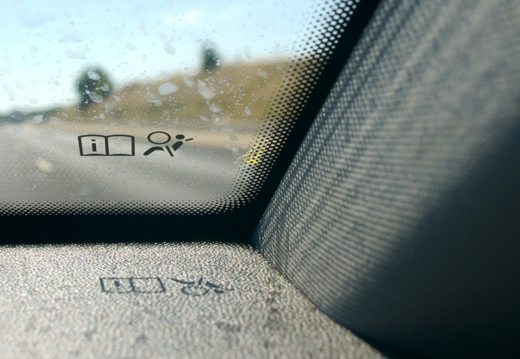Ever wondered where all those airbags in your car are hiding? If so, you’re not alone. Airbags are one of the most essential safety features in modern vehicles, but unless you’ve been in a collision (and hopefully, you haven’t), you probably don’t give them much thought. Let’s change that today. Knowing where your car’s airbags are located can give you a better understanding of your vehicle’s safety features and how they protect you and your passengers.
Front Airbags: The Basics
The front airbags are the OGs of car safety. These are the ones most people think of first, and they’re located in two main spots:
- Driver’s Airbag: You’ll find this inside the steering wheel. It’s strategically placed to protect the driver’s head and chest in the event of a frontal collision. Did you know that the driver’s airbag became a standard feature in most cars starting in the 1990s? It’s a lifesaver—literally.
- Passenger’s Airbag: This one is tucked away in the dashboard on the front passenger side. It deploys during a collision to shield the passenger from hitting the dash or windshield. You might spot a small “SRS Airbag” or “Airbag” marking where it’s located.
Side Airbags: Protection from the Sides
Side airbags add extra protection in case of a side-impact collision. They’re often overlooked but are just as vital:
- Seat-Mounted Side Airbags: These are built into the sides of the front seats and sometimes the rear seats. They pop out to shield your torso and pelvis from any intruding car parts or objects. Picture this: A T-bone accident at an intersection. Without side airbags, your body would take the full force of the impact.
-
Curtain Airbags: Imagine a big safety curtain dropping down from the ceiling along the sides of your car. That’s what these do. They’re typically installed along the roofline and deploy to cover the side windows, protecting your head and reducing the risk of being ejected in a rollover accident.
Knee Airbags: Keeping Your Lower Body Safe
Knee airbags are a lesser-known but super important addition to modern vehicles. They’re located under the dashboard, near the steering column for the driver and sometimes under the glovebox for the front passenger. These airbags are designed to cushion your knees and legs, reducing injuries in a crash. A study by the Insurance Institute for Highway Safety (IIHS) noted that knee airbags help lower the risk of serious leg injuries by distributing crash forces more evenly.
Rear Airbags: Yes, They Exist!
Rear passengers aren’t left out when it comes to airbag protection. Many newer cars come equipped with airbags specifically for the back seats, such as:
- Rear Side Airbags: Similar to the side airbags up front, these protect passengers in the back from side impacts.
-
Inflatable Seat Belts: Some vehicles take rear-seat safety to the next level by incorporating airbags directly into the seat belts. These inflate on impact to distribute the force across a larger area, reducing the risk of injury. Ford, for example, introduced inflatable seat belts in some of their models to enhance rear passenger safety.
Other Specialized Airbags
Technology keeps evolving, and so do airbags! Some newer vehicles include:
- Pedestrian Airbags: These are external airbags that pop out to protect pedestrians if the car senses an imminent collision. Volvo pioneered this feature in some of their models.
- Center Airbags: These are placed between the driver and front passenger seats to prevent occupants from colliding with each other during a side impact.
- Seat Cushion Airbags: Found in some cars, these inflate beneath you to keep you properly positioned during a crash.
How to Spot Airbag Locations
If you’re curious about your own car, here’s a quick tip: Look for small “Airbag” or “SRS” (Supplemental Restraint System) labels. These are usually embossed or printed near the airbag locations, like on the steering wheel, dashboard, or side pillars.
Real-Life Example: Why Knowing Matters
Imagine this: You’re driving with a passenger who loves putting their feet up on the dashboard. While it may look comfy, it’s incredibly dangerous because if the front passenger airbag deploys, it could seriously injure their legs. Knowing where airbags are located can help you avoid situations like this and ensure everyone rides safely.
Final Thoughts
Airbags are silent protectors, ready to spring into action when you need them most. While you hopefully never have to see them in action, understanding where they’re located and how they work can make you a more informed and safer driver. So, the next time you hop in your car, take a moment to appreciate all the hidden safety features working hard to keep you and your loved ones safe.
Drive safe, stay aware, and always buckle up!





